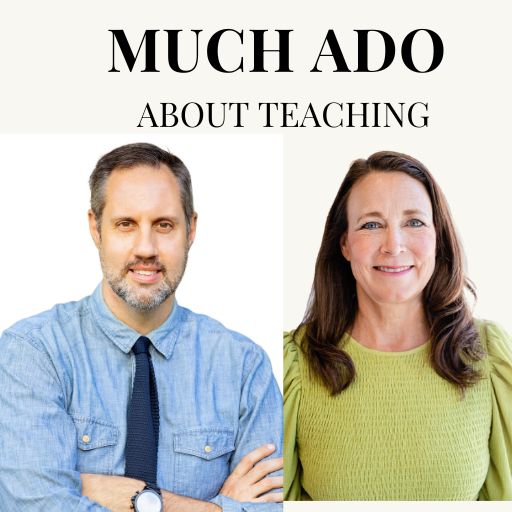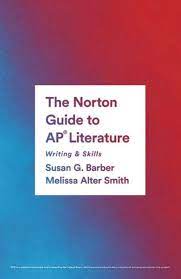As Susan said about Q1, the operational Q2 passage, “The Rock Eaters,” and prompt were definitely accessible for most students this year. I still looked at a few drawings, read a few song lyrics (“In the Heights”), and even saw one person who wrote out the numbers from one to one hundred (!), but for the most part, students made a valiant effort. My favorite moments during the week came when I saw my tablemates’ faces light up and heads nod because of insightful moments in essays they were reading, and there were plenty of those throughout the seven days. This passage contains so much to unpack, and I definitely plan to use it in my classroom next school year!
What students did well
Thesis:
Most students are getting the idea that complexity means characters experiencing multiple, often conflicting emotions at the same time. Getting this complexity in the thesis in the opening paragraph sets up a clear line of reasoning right away. Responses with a strong thesis usually indicated how the narrator experienced warm acceptance from some back home on the island country while facing resistance from those who felt bitter about them ever leaving in the first place. A really solid thesis makes me expect a really solid essay, and it’s obvious teachers are emphasizing this idea in their AP Lit classes.
Commentary and Evidence:
Covering the entire passage in a mere forty minutes is no small task, but students who in some way addressed the narrator’s experience at the beginning, middle, and end of the visit home tended to write a more complete analysis and follow through with a clear line of reasoning. In a successful line of reasoning, students build an argument that reads like they’re leading a discussion. I’m so impressed with each one who is successful at this.
Many described the narrator’s experience as “bittersweet” and noticed from the beginning that this story contains classic elements of a coming of age tale and/or a hero’s journey. Students also noticed the narrator’s consistent use of the first-person plural point of view, as well as the initial “us vs. them” attitude and how it shifts later in the passage.
Students noticed how Peynado packs in quite a bit of backstory in the first paragraph, noting how those in the narrator’s group “developed a distinct float” and discovered they could fly “as far as [they’d] ever wanted. They often observed how immediately the author frames this story as a typical one where young people use their new-found talents to leave home as quickly as they can get out, later realizing the parts they miss and want to introduce to their children.
Since the prompt asks for an analysis of the narrator’s “complex experience of this return home,” students needed to move quickly to the way various family members and friends feel about and respond to the visit. They impressed me with the subtleties of emotion they picked up on.
Here are several elements of successful lines of reasoning I saw:
- The flyers, like anyone who leaves home to pursue success, are excited to be home again and introduce their children but also realize life has gone on without them, and many who remained have felt betrayed.
- Part of growing up means realizing people can’t just go home and expect everything to be the same as it was when they left it, and it takes some effort to bridge the gap.
- Being away from home for decades has increased the flyers’ appreciation for the unique characteristics of their childhood home (a common characteristic of the journey).
- The flyers realize they don’t want their history to be erased as the Tainos people’s was…and how significant this history is for their children.
I noticed that the best support paragraphs don’t isolate one particular device or technique, but weave them into the discussion as they fit naturally (often a chronological progression through the passage). I also found it interesting that our training materials reminded us that students are not required to name elements, or name them correctly, in their analysis. One person wrote how Peynado “abuses commas” (instead of asyndeton), and it actually worked because the student supported the idea.
On the whole, students succeeded in their analysis of various images Peynado includes and how the imagery shifts multiple times to reflect the flyers’ readjustment and joy at introducing their children to the elements of the island they are falling in love with all over again. They also largely succeeded in analyzing the symbolic nature of the beds the flyers had outgrown (as a representation of how they don’t “fit” anymore) and how the moment when the children join hands represents real acceptance, a change of heart on both sides.
Sophistication:
With this prompt, students most often earned the sophistication point in Row C through the second path, illuminating their interpretation by situating it within the broader context of the immigrant experience or the process of growing up and desiring to pursue something greater. In addition, many responses carefully explored the tensions between the flyers and those of their generation who stayed, and how carefully the flyers worked to repair broken relationships by reminding those at home of the many connections they still share.
Where students can improve
Thesis:
In many responses, the student tried to include a thesis in the first paragraph (Peynado uses x, y, and z literary elements and techniques to convey the narrator’s complex experience), but it was empty, devoid of an actual claim and did not earn the thesis point. Most of the time I could find the claim later in the essay, even at the end, but it’s so hard to develop a line of reasoning without stating it at the outset.
Commentary and Evidence:
Even though by and large, students are pretty good at identifying literary elements and techniques, responses that stayed in the 1-2-0 range lacked strong commentary connecting the technique with meaning. In addition to “the author uses diction,” this time I saw quite a bit of “the author uses tone.” This tells me I need to be sure students understand how to write about shifting tone and the characteristics of the diction before and after the shifts. They also need practice coming up with accurate adjectives to describe diction. I’m also continuing to ponder how I can fully convince students that “Readers can relate” doesn’t say anything.
One thing that detracts is if a student writes mostly about immigrant families and doesn’t connect firmly with the passage. We need to remind writers that, yes, they need to uncover thematic ideas, but then ground them firmly in what the author is doing specifically in the passage, how she’s doing it, and why it’s important.
I came away from the reading this year feeling a renewed confidence that our students CAN accomplish the tasks in the free response questions. Continuously sharing samples of effective student writing, and having students constantly evaluate what they’re doing in their own writing, seems like the best way to increase their comfort level and confidence.
Teaching points/extensions for the classroom
- Several chapters from How to Read Literature Like a Professor by Thomas C. Foster would pair nicely with this prompt. I’m sure there are others, but these were the first that came to mind:
- “Flights of Fancy”
- “If She Comes Up, It’s Baptism” (dunking their children in rivers)
- “Nice to Eat with You: Acts of Communion” (lines 53-54, children eating together)
- Since this passage is an excerpt from Peynado’s full short story, explore these questions: How do you predict the rest of this story might go? Also, does the theme remain the same throughout the rest? Do you think this trip home is a permanent one? Should it be?
- Roy Smith, Q2 table leader this year, suggests having students respond to the question as it is before having them read the full story and consider what changes, if any, they might make to their original analysis. I love this idea!
- Socratic Seminar: How is this story an allegory for the immigrant experience? What happens when children come to appreciate their home/heritage? Can a person ever truly go home again?
- Ask students: What is the most complex experience you can remember? What details would help you relay it to others? How can you show your complexity in a college essay/personal narrative?
- Pair with Clint Smith’s poem, “Meteor Shower”: What do you appreciate about home? What parts of this place do you think you might want to share with your children one day?
Because I thought creating a question-specific playlist was such a fun idea, here’s one inspired by “The Rock Eaters”: https://music.apple.com/us/playlist/the-rock-eaters/pl.u-BNA66GRIZLN6v

Jennifer Stuckey teaches at Brookville High School in Campbell County, VA. Look for Jennifer presenting at VATE, NCTE, the AP Lit reading, or working on the farm after school hours.













One comment
Māra J. Corey
“We” should be first-person plural, no? Otherwise, I love your commentary here! As you mentioned, HTRLALP was extremely helpful with this prompt. Everything comes from the bible would have addressed the mention of the flyers as “prodigals.”
I read for this prompt as well, so I confirm your statement about the accessibility of this passage.